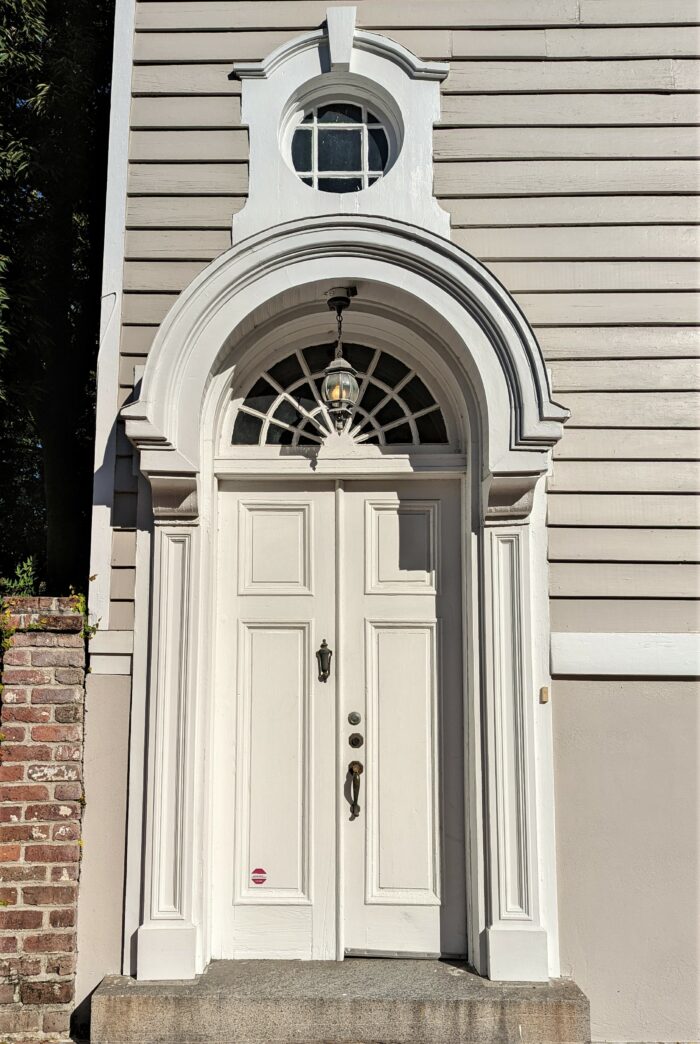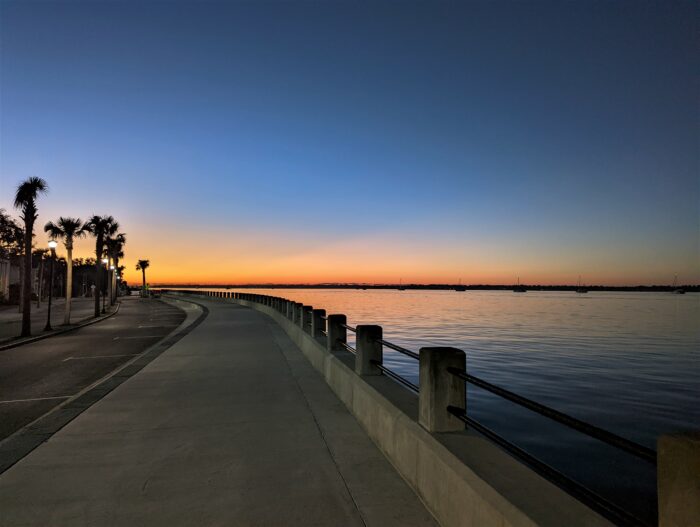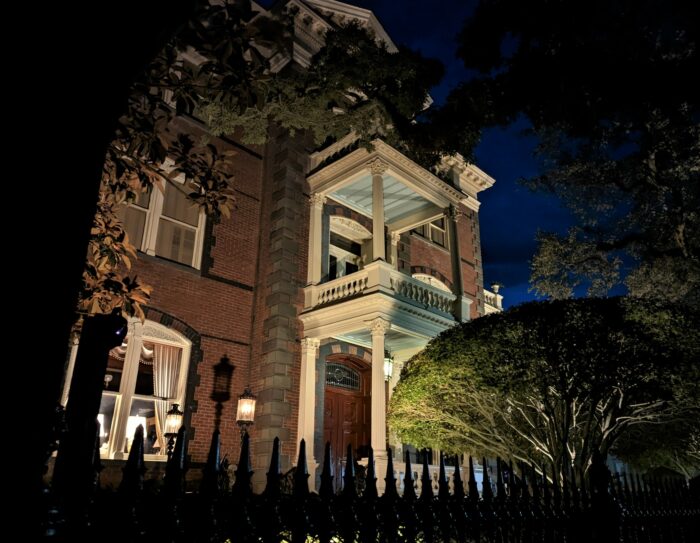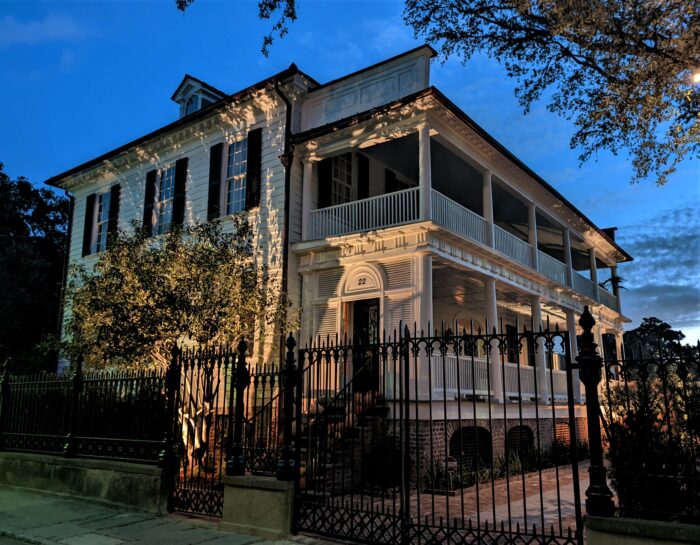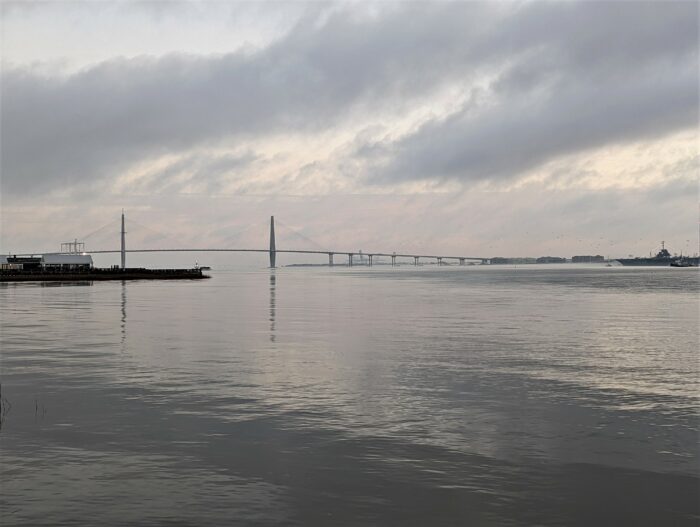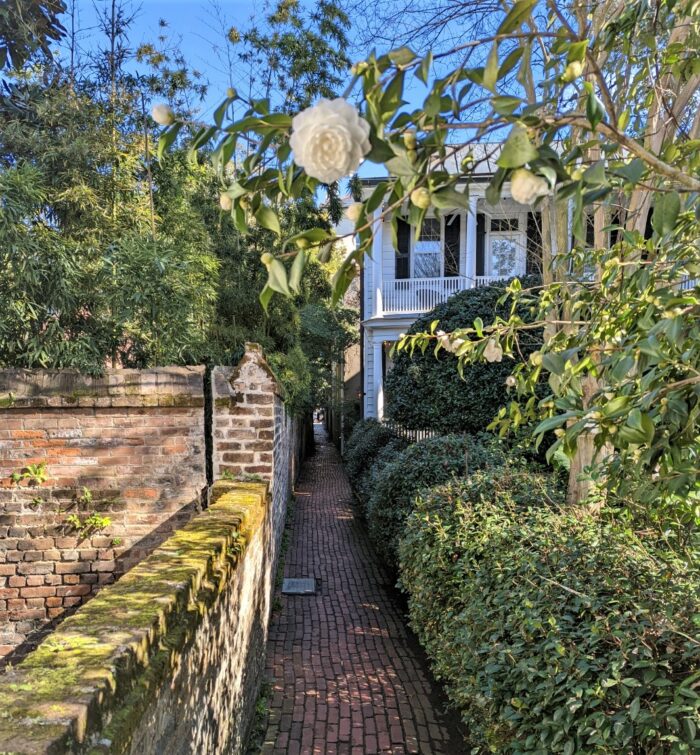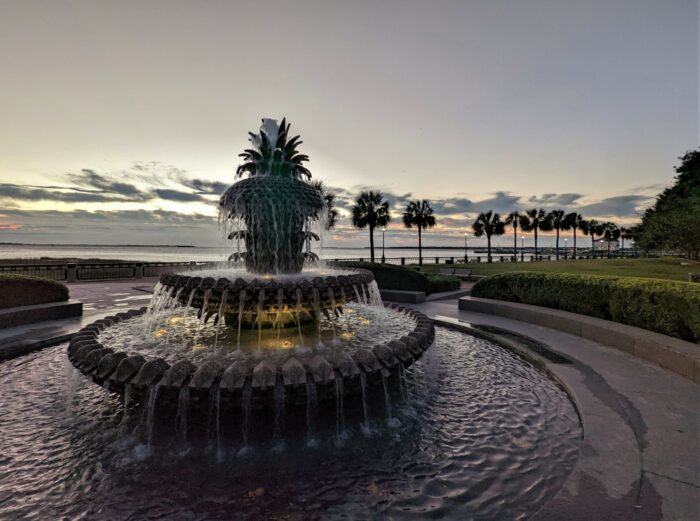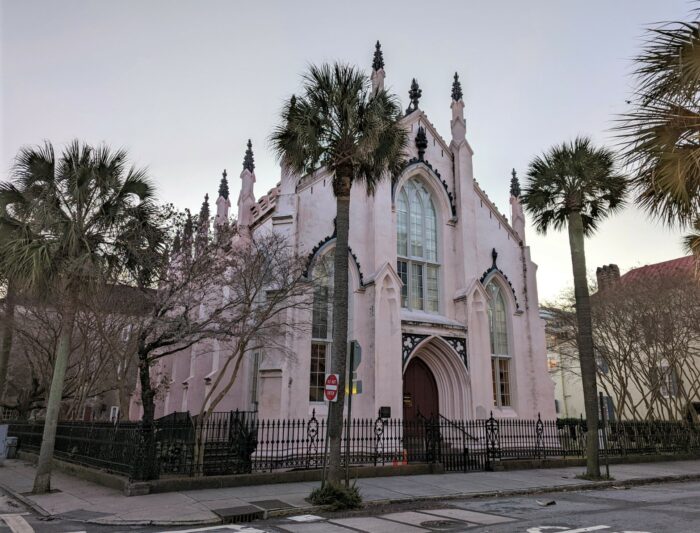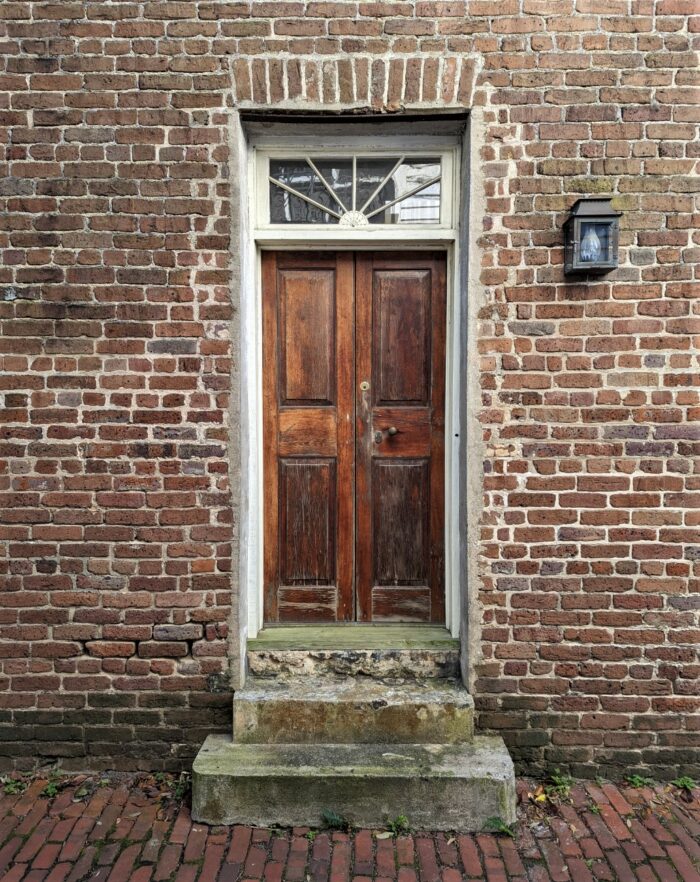This cool door is the entrance to the Department of Religious Studies at the College of Charleston. You can find it on Glebe Street.
High Low
A pretty sunrise as seen from the new high Low Battery — the raised and redone section of the Low Battery, located along Murray Boulevard. The street is named after Andrew Buist Murray, who grew up in a Charleston orphanage. After making a success of himself, he repaid the city in a number of ways, including financing the building of a vocational school on Chalmers Street which bore his name (it’s now condos!).
Williams Mansion
The Williams Mansion (formerly known as the Calhoun Mansion) is one of the largest single family houses in Charleston, coming it at 24,000 square feet.
Morning on Legare
This house is just waking up on Legare Street. The Charles Elliot House was built around 1764, when the threat of house fires was very real and dangerous. As a way to help safeguard the house, it cleverly included masonry firewalls between the main rooms — which extended from the cellar to the attic.
The Bridge
A view up the Cooper River to “The Bridge.” One of the great features of the Cooper River Bridge is the 2.7 mile pedestrian/bicycle path, which provides spectacular views of the river, city and harbor. The path is named Wonders’ Way, after Olympic hopeful Garrett Wonders who was killed in a car/bicycle collision.
Beautiful Stolls
Stoll’s Alley is one of the wonderful cut-throughs in downtown Charleston. Once called Pilot’s Alley (after the harbor pilots who would use it to quickly get to the harbor), this brick-lined “street” runs between Church and East Bay Streets. At its narrowest, it’s just a few feet wide!
Early Morning High Battery
The High Battery, one of the great places to stroll in Charleston, was originally built as a seawall to protect the land on the peninsula from water intrusion.
Early Morning Pineapple
The pineapple fountain in Waterfront Park is a favorite spot for many. Appropriately, the pineapple is a symbol of welcome and hospitability. Traditionally that was expressed two ways –1) the fruit would be used as a centerpiece at the dining table for parties (sharing of friendship), and 2) a fresh pineapple would be places on a gate post or speared on a fence to indicate someone had returned home or were receiving guests.
French Huguenot Church
The French Protestant (Huguenot) Church on Church Street is unusual, not just because it is pink, but because once a year they give a nod to their long and rich history by conducting a service completely in French.
Brick and Iron
This cool door surrounded by brick is on Stolls Alley, which is named after a blacksmith (Justinus Stoll) who lived and worked there in mid-1700’s.
- « Previous Page
- 1
- …
- 7
- 8
- 9
- 10
- 11
- …
- 188
- Next Page »
